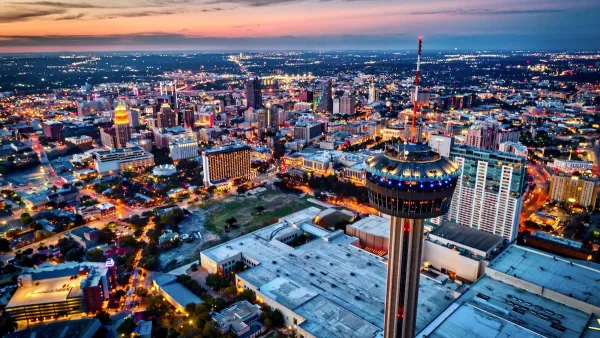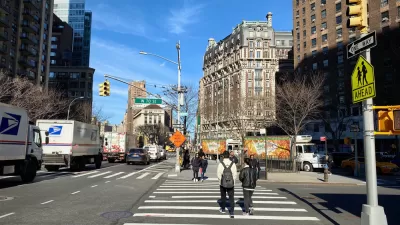A 1980 law protecting pedestrians from falling debris has spawned a labyrinth of sidewalk sheds: the covered walkways that often support scaffolding. Many of these "temporary" structures linger for years.

Construction and repair work brings with it a collection of temporary structures. Too often, those sheds, scaffolds, barriers, and portable toilets can become semi-permanent fixtures that mar the beauty of a street or facade for years on end. Aaron Elstein documents one such case: the New York City sidewalk shed.
A 1980 law requires building owners to protect pedestrians from falling masonry, but good intentions have led to unexpected side effects. Elstein writes, "[Landlord Muhammad] Shahid may infuriate people who live near his property, but he's one of many landlords who have concluded it's cheaper to keep up a shed—and pay fines for violations—than it is to fix a building."
The maze of sheds girdling the city's walkways are an unsightly nuisance to residents and business owners. From the article: "The chief purpose of this particular shed, on a handsome block in the Mount Morris Park Historic District, seems to be to collect garbage and provide shelter to the loiterers who lurk underneath. Repairs at the building it surrounds move at a glacial pace."
The scale of New York's shed problem is troubling given its status as the nation's most walkable metropolis. "There are now nearly 9,000 sheds entombing city streets, according to the Department of Buildings, up from about 3,500 in 2003. That's 190 miles worth of sheds, or 1 million linear feet."
FULL STORY: The law that created the billion-dollar scaffold industry has turned city sidewalks into an obstacle course

Planetizen Federal Action Tracker
A weekly monitor of how Trump’s orders and actions are impacting planners and planning in America.

Chicago’s Ghost Rails
Just beneath the surface of the modern city lie the remnants of its expansive early 20th-century streetcar system.

San Antonio and Austin are Fusing Into one Massive Megaregion
The region spanning the two central Texas cities is growing fast, posing challenges for local infrastructure and water supplies.

Since Zion's Shuttles Went Electric “The Smog is Gone”
Visitors to Zion National Park can enjoy the canyon via the nation’s first fully electric park shuttle system.

Trump Distributing DOT Safety Funds at 1/10 Rate of Biden
Funds for Safe Streets and other transportation safety and equity programs are being held up by administrative reviews and conflicts with the Trump administration’s priorities.

German Cities Subsidize Taxis for Women Amid Wave of Violence
Free or low-cost taxi rides can help women navigate cities more safely, but critics say the programs don't address the root causes of violence against women.
Urban Design for Planners 1: Software Tools
This six-course series explores essential urban design concepts using open source software and equips planners with the tools they need to participate fully in the urban design process.
Planning for Universal Design
Learn the tools for implementing Universal Design in planning regulations.
planning NEXT
Appalachian Highlands Housing Partners
Mpact (founded as Rail~Volution)
City of Camden Redevelopment Agency
City of Astoria
City of Portland
City of Laramie




























